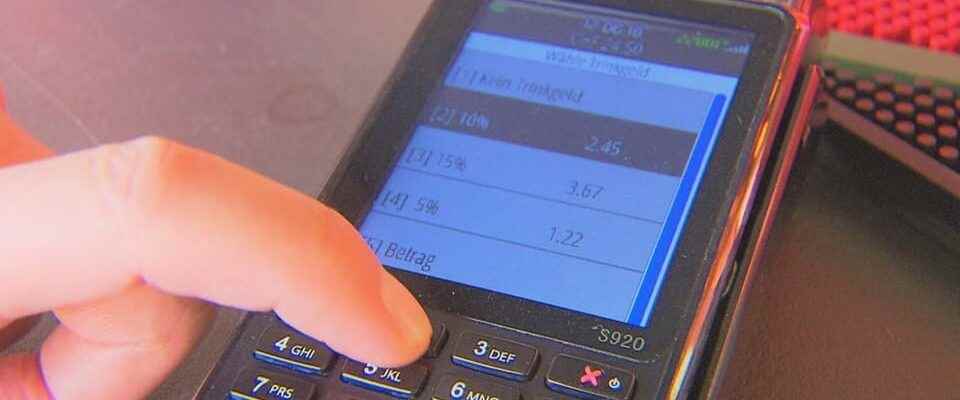contents
Restaurateurs are now relying on a digital tip function that is known from the USA. This could be a mistake.
More cashless payments, less tips. This is a consequence of the Covid pandemic. According to one current papers of the British «Journal of Behavioral and Experimental Economics» 20 percent fewer consumers tip when they pay by card instead of cash.
A number of Swiss restaurateurs are now trying to save tips into the digital world with a new function. Percentages are suggested to guests on the payment displays. It is also possible not to tip.
Legend:
5, 10 or 15 percent? Catering companies want to receive the tip on card payments.
SRF
Travelers to the USA have known this system for a long time. There, tips are an integral part of the income for employees in the hospitality industry. It is also significantly higher than a Europe: 20 percent is a matter of course.
The situation is different in Switzerland – actually. Tips have been abolished in Swiss gastronomy for almost 50 years. Nevertheless, according to a Study by Bank Cler from June 2022 around 97 percent of Swiss residents tip.
Behavioral economist Gerhard Fehr doesn’t see much chance of this solution for Switzerland. It does not correspond to the way tips are given in this country: “Only 50 percent of the Swiss give a fixed percentage of the bill as a tip.” 30 percent round up, 20 percent do not proceed systematically. “And you can’t afford to alienate 50 percent of your customers.”
His suggestion: You should set up a yes/no function instead and then leave a blank field. This most likely symbolizes the voluntariness that one is used to.
In Zurich, the tip function is already common, for example at Frau Gerolds Garten. Since the pandemic, this company has only been able to pay by card. The self-service operation offers a choice between 5, 10 and 15 percent tips on its terminals. Solutions were sought because the tip amounts had decreased “extremely” with card payments.
Co-owner Tom Maurer says: “We don’t want to pressure anyone to tip. We only want to give those who want the opportunity to tip again.” So far he has not received any negative reactions. You are now back to around 5 percent tip – as before the pandemic.
Other requested operators are reluctant to introduce this feature. Rudi Bindella, head of the Bindella Group with more than 30 companies, writes: “We don’t think it’s appropriate for the guest to have to decide in the payment process what percentage he has to or should give as a tip.” And Michel Péclard, who owns 15 companies, writes that this function is considered too impersonal. “I think human contact is still important in gastronomy.”
Incidentally, it is precisely this human contact that prompts customers to tip at all. Gerhard Fehr says: “Studies show that waitresses who introduce themselves personally at the beginning can expect an average of 50 percent more tips.”
Discussing the order together again increases the tip by 70 percent. Likewise, drawing a smiley with a thank you on the bill at the end. «And very important: An authentic smile has the strongest effect. Here you can almost double the tip.”

